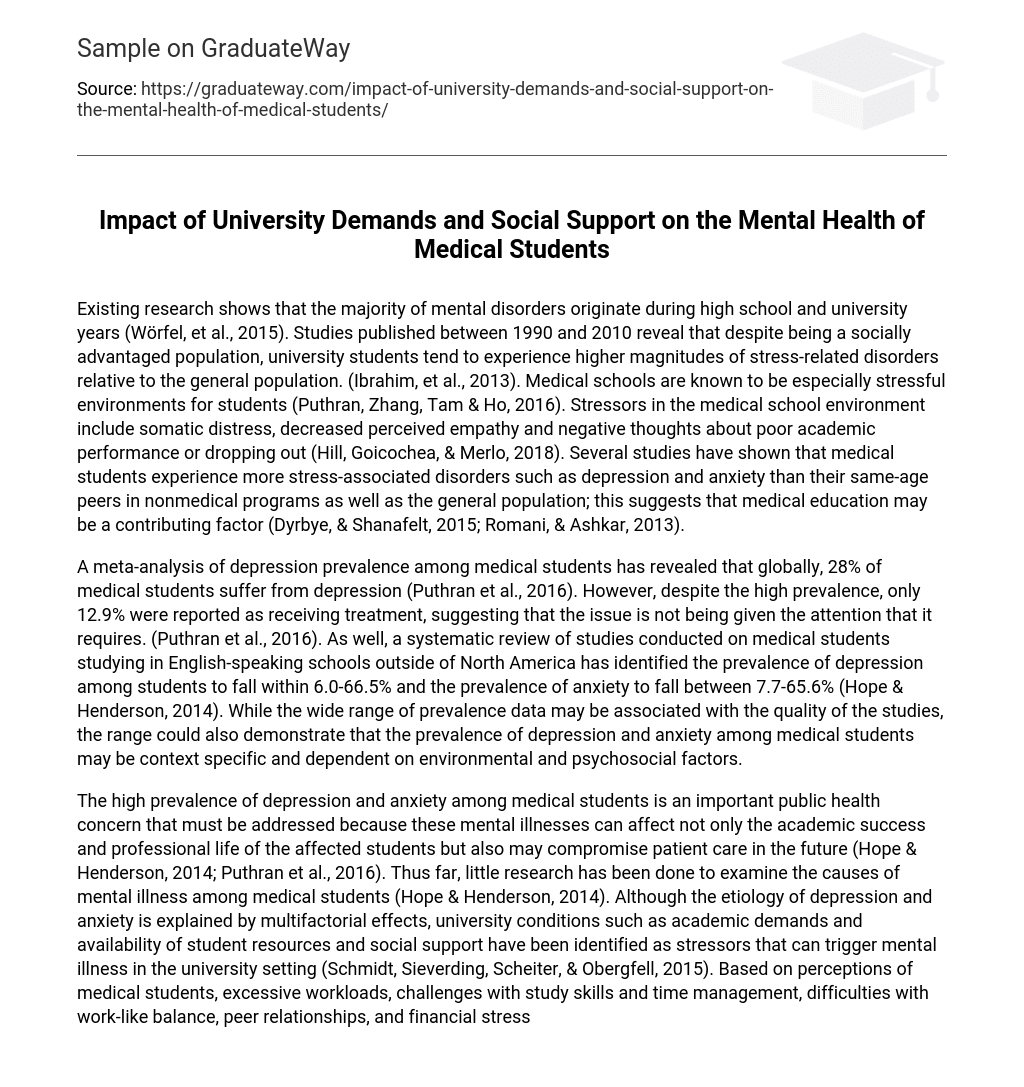Existing research shows that the majority of mental disorders originate during high school and university years (Wörfel, et al., 2015). Studies published between 1990 and 2010 reveal that despite being a socially advantaged population, university students tend to experience higher magnitudes of stress-related disorders relative to the general population. (Ibrahim, et al., 2013). Medical schools are known to be especially stressful environments for students (Puthran, Zhang, Tam & Ho, 2016). Stressors in the medical school environment include somatic distress, decreased perceived empathy and negative thoughts about poor academic performance or dropping out (Hill, Goicochea, & Merlo, 2018). Several studies have shown that medical students experience more stress-associated disorders such as depression and anxiety than their same-age peers in nonmedical programs as well as the general population; this suggests that medical education may be a contributing factor (Dyrbye, & Shanafelt, 2015; Romani, & Ashkar, 2013).
A meta-analysis of depression prevalence among medical students has revealed that globally, 28% of medical students suffer from depression (Puthran et al., 2016). However, despite the high prevalence, only 12.9% were reported as receiving treatment, suggesting that the issue is not being given the attention that it requires. (Puthran et al., 2016). As well, a systematic review of studies conducted on medical students studying in English-speaking schools outside of North America has identified the prevalence of depression among students to fall within 6.0-66.5% and the prevalence of anxiety to fall between 7.7-65.6% (Hope & Henderson, 2014). While the wide range of prevalence data may be associated with the quality of the studies, the range could also demonstrate that the prevalence of depression and anxiety among medical students may be context specific and dependent on environmental and psychosocial factors.
The high prevalence of depression and anxiety among medical students is an important public health concern that must be addressed because these mental illnesses can affect not only the academic success and professional life of the affected students but also may compromise patient care in the future (Hope & Henderson, 2014; Puthran et al., 2016). Thus far, little research has been done to examine the causes of mental illness among medical students (Hope & Henderson, 2014). Although the etiology of depression and anxiety is explained by multifactorial effects, university conditions such as academic demands and availability of student resources and social support have been identified as stressors that can trigger mental illness in the university setting (Schmidt, Sieverding, Scheiter, & Obergfell, 2015). Based on perceptions of medical students, excessive workloads, challenges with study skills and time management, difficulties with work-like balance, peer relationships, and financial stress have been highlighted as personal stressors that are believed to have the greatest impact on burnout, stress-related disorders and suicide ideation (Hill, Goicochea, & Merlo, 2018). Additionally, perceived system-level stressors have also been identified as impactful contributors including university administrative failures, pressure related to performance on assessments and insufficient support for career planning (Hill, Goicochea, & Merlo, 2018).





